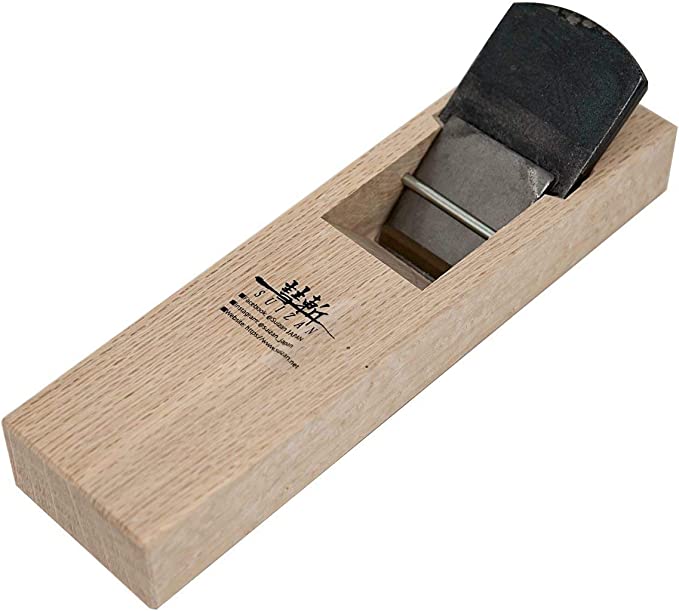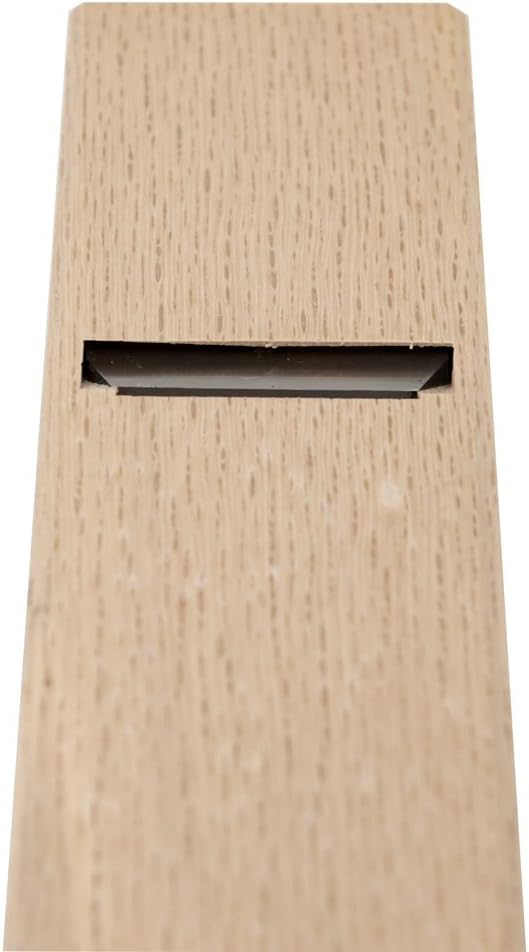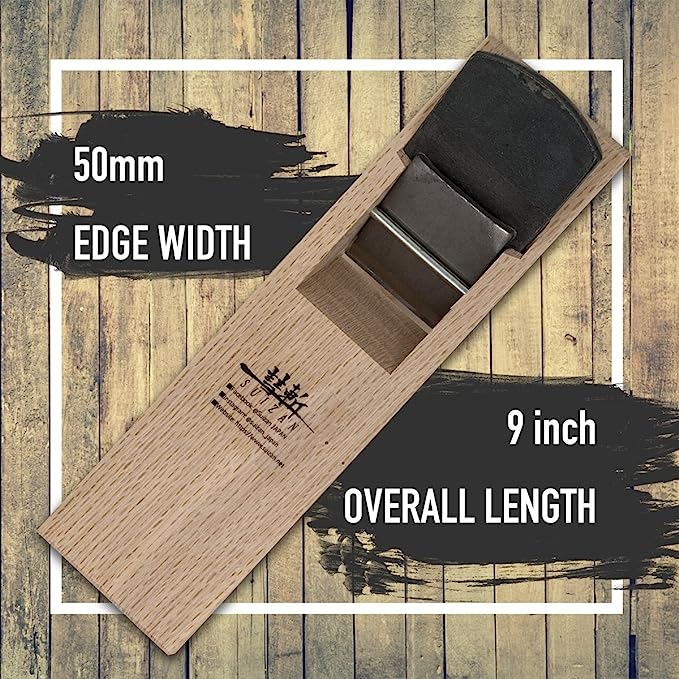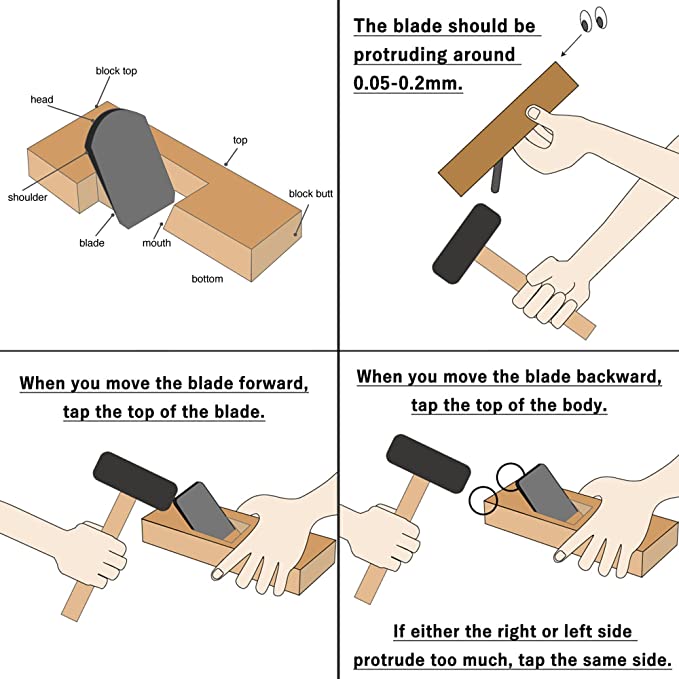



SUIZAN Japanese Wooden Hand Plane Kanna 2 Inch (50mm)
Choose options
Jonathan’s Hot Take:
I’ve been using Suizan saws for years — and I’m so excited to finally add their hand planes to our store.
The planes are made with high-quality Japanese steel and the highest level of craftsmanship.
And they leave boards so smooth you don’t even need sandpaper.
What I love about Japanese Hand Planes (called Kanna in Japan) is their absolute SIMPLICITY.
It’s just a wooden block, an iron blade, and the board you’re planing.
This no-frills design leads to a couple differences from Western-style planes:
The tool is a lot lighter
You PULL the plane across wood instead of push
Blade adjustment and removal is done by tapping the wooden body with a mallet
It can sound daunting to someone accustomed to metal planes with screws and levers… but these are tools every woodworker should try.
How to Use Japanese Hand Planes:
1. Hold the hand plane with both hands and pull it towards you.
2. Use your body weight to pull the hand plane over the wood. There’s no need to apply excess power.
How to Adjust The Blade:
To remove the blade, lightly tap the top corner of the body with a hammer or mallet
If either side of the blade is too far out, tap lightly on the side where the excess blade is protruding.
When setting the blade position, tap the top of the blade lightly with a hammer. The blade should protrude about 0.002 to 0.008 inches (0.05 to 0.2 mm) from the sole.
SPECS:
Blade Width: 1.7” (42 mm)
Body: 6” x 2” x 1.6”
Weight: 0.35 lbs
Body Material: Beech
Blade Material: SK5 Japanese Steel
I’ve been using Suizan saws for years — and I’m so excited to finally add their hand planes to our store.
The planes are made with high-quality Japanese steel and the highest level of craftsmanship.
And they leave boards so smooth you don’t even need sandpaper.
What I love about Japanese Hand Planes (called Kanna in Japan) is their absolute SIMPLICITY.
It’s just a wooden block, an iron blade, and the board you’re planing.
This no-frills design leads to a couple differences from Western-style planes:
The tool is a lot lighter
You PULL the plane across wood instead of push
Blade adjustment and removal is done by tapping the wooden body with a mallet
It can sound daunting to someone accustomed to metal planes with screws and levers… but these are tools every woodworker should try.
How to Use Japanese Hand Planes:
1. Hold the hand plane with both hands and pull it towards you.
2. Use your body weight to pull the hand plane over the wood. There’s no need to apply excess power.
How to Adjust The Blade:
To remove the blade, lightly tap the top corner of the body with a hammer or mallet
If either side of the blade is too far out, tap lightly on the side where the excess blade is protruding.
When setting the blade position, tap the top of the blade lightly with a hammer. The blade should protrude about 0.002 to 0.008 inches (0.05 to 0.2 mm) from the sole.
SPECS:
Blade Width: 1.7” (42 mm)
Body: 6” x 2” x 1.6”
Weight: 0.35 lbs
Body Material: Beech
Blade Material: SK5 Japanese Steel







